Dental Services
Dr. Cat provides comprehensive care for her patients from infancy through adolescence. She offers a personalized experience to tailor to each child’s specific needs.

Preventive Care
Preventative dental care is an important component to overall health throughout life. Laying a great foundation starts at a young age by establishing good oral hygiene skills and will help your child enjoy a healthy smile for years to come.
Exams and x-rays
The American Academy of Pediatric Dentistry recommends that children have their first dental visit by age one or when their first tooth appears. Dr. Cat will examine your child every time they get their cleaning and explain any findings and treatment options to you. We also may need to take x-rays to gain more information about your child’s teeth. Bite-wing x-rays check for cavities between teeth, Peri-apical x-rays check the roots of teeth, and a panoramic x-ray gives us information about your child’s growth and development by looking at all their teeth at once. At S’more Smiles we have state of the art equipment that delivers superior images while reducing radiation exposure. If your child has difficulty getting x-rays taken we even have an option to take x-rays without putting the x-ray device in their mouth. Exams can take about 20 to 40 minutes. So, please plan your time accordingly.
Infant oral health
We love it when babies come to visit! Early visits establish comfort for your child and allows us to catch little cavities before they get big. Dr. Cat will perform a knee-to-knee exam. This is where she’ll make a little bed with her knees and your knees so that your baby can still remain in your lap and feel comfortable. It’s likely your baby will fuss a little or cry, but this is very normal and lets us have a look into their mouth. Dr. Cat with brush your baby’s teeth, examine them, and place fluoride varnish. The knee-to-knee exam takes only 5 minutes. We will also discuss guidance on how to care for your baby’s teeth at home.
Silver Diamine Fluoride
Silver Diamine Fluoride (SDF) is an FDA-approved topical solution that treats and prevents dental cavities and reduces tooth sensitivity. It is made with two acting ingredients: the silver component is an anti-microbial agent that kills bacteria and prevents the formation of new colonies of bacteria, and the fluoride prevents further demineralization (softening) of the tooth structure. SDF is not a replacement for a filling or crown, it simply saves vital tooth structure so that the tooth can be restored at a later date. It is often used in very young patients or patients that are awaiting their care to be completed with IV sedation or in the hospital.
SDF is a simple and noninvasive way to treat cavities, and it can be done from the comfort of our dental office.
The Process
- The teeth are brushed without paste and rinsed.
- The carious teeth are isolated, kept dry, and all excess debris is removed.
- A microbrush is dipped in a drop of SDF and placed on the lesion(s) for two minutes.
- Any decayed areas will stain black. Healthy tooth structure will not stain.
- Excess SDF is removed and patients are instructed to not eat or drink for one hour.

Why Use SDF?
We recommend using SDF in several situations, including:
- Children who have extreme decay (severe early childhood caries)
- Young children who have difficulty sitting still for treatment
- Special needs patients
- Children with carious lesions (cavities) that need to be treated over several visits
Advantages of SDF
- Quick, easy, painless – requires little cooperation
- Provides immediate relief from tooth hypersensitivity
- Kills the organisms that cause cavities
- Hardens softened dentin making it more acid- and abrasion-resistant
- Does not stain healthy tooth structure
- Avoid/delay more invasive restorations
Disadvantages of SDF
- Permanently stains cavities black
- Cavities that trap food, eventually require a restoration
- Not good long-term option for deep cavities
- Requires reapplication if treatment isn’t rendered promptly
Cleanings
Cleanings are an important part of a healthy smile. They offer an opportunity for our skilled hygienists to remove any plaque or build up that can cause cavities or gum irritation (gingivitis). Your child’s teeth will be cleaned, polished, flossed, and rinsed. This is also a great time to ask Dr. Cat any questions about your child’s teeth or how to take good care of them at home.
Fluoride treatments
Fluoride is a naturally occurring mineral that is released from rocks into air, soil, and groundwater. The amounts of naturally occurring fluoride are often not enough to prevent tooth decay, so fluoride treatments are beneficial. Fluoride helps prevent cavities and tooth decay by hardening tooth structure and making it more resistant to acid. It is applied based on each child’s unique risk to getting cavities, but this is usually every six months. We offer foam and fluoride varnish at S’more Smiles.
After a fluoride treatment we ask that your child does not have anything to eat or drink for 30 minutes to allow the fluoride to fully absorb and do its job!
Sealants
Sometimes teeth have deep tiny grooves that cannot be accessed by a toothbrush. No matter how much you brush food and bacteria can get stuck in these grooves and cause cavities. Sealants are a way of preventing these types of cavities. Sealants are a protective plastic coating that is placed in the deep grooves of your child’s teeth. Once sealants are in place brushing can be more effective.
Sealants are often placed on adult teeth, especially adult teeth that have just come into the mouth, but sometimes baby teeth can have them, too. Dr. Cat will determine which teeth require sealants based on your little one’s needs. Placing sealants is a quick and painless procedure. Your child’s teeth will be cleaned, dried, painted with sealant, and cured with a light to harden.
Restorative
Cavities happen, but we’re right there with you to help get your little one’s teeth healthy again. Dr. Cat offers a variety of treatment options that are all backed by scientific evidence.
Fillings
Fillings are made out of a tooth colored resin that is placed inside the tooth once the decay has been removed from the cavity. They can be very esthetic and blend into natural tooth structure. The filling material bonds to the tooth surface.
Fillings are a less expensive and more conservative option to crowns, however they are more likely to fall out, chip, or stain than a crown. Luckily, we can repair fillings in one visit if this does happen. In baby teeth, fillings can be tough to bond due to the differences in how baby teeth are shaped, however with good home care they can last for a long time when placed in adult teeth.
Crowns
Crowns cover the entire surface of the tooth and help strengthen it. Crowns are most commonly used for teeth with large cavities, or with cavities that involve multiple parts of the tooth, like the chewing surface and the side of the tooth. They are also needed if a tooth has a nerve treatment.
Stainless Steel crowns are the most commonly used crowns for baby teeth as the crown can be shaped to fit your child’s tooth right in the dental chair. Stainless steel crowns are very strong, and should last for the rest of the life of the tooth. Sometimes if chewy or sticky foods are eaten crowns can come off. If able to, save the crown and we can have it cemented back on the tooth. If it gets lost, don’t worry, we save what size your child needs and can place a new one.
For front teeth with big cavities, we offer several options. Strip crowns are crowns made out of the same material as fillings and are very esthetic. However, because they are a plastic material, they are prone to chipping. We also offer stainless steel crowns with a tooth colored facing and a fully tooth colored zirconia crown for front teeth. These crowns are much stronger and last longer than strip crowns. We also have plain stainless-steel crowns for front teeth.

Space Maintainers
Baby teeth are the best space maintainers for adult teeth, but if they are lost early, it’s important to hold space until the adult tooth pushes them out. If no space maintainers are placed, teeth tend to drift until they touch the tooth next to them. This reduces the available space for your youngster’s adult teeth to erupt into their mouth causing crowding later in life. Space maintainers are designed to only stay in the mouth until your child is 9-12 years old. Please do not allow your child to eat sticky foods or play with the space maintainer as this can cause them to fall out.
Dr. Cat offers several options for space maintenance. A band-and-loop is a metal band that is placed around the tooth next to the space, and a bent wire reaches to touch the tooth on the other side of that space. These are completed in one visit.
A lower lingual holding arch has metal bands placed around the back teeth on both sides and attaches to a wire that sits on the lingual or inside part of the teeth. This is commonly used if a child has lost back teeth on both sides of their mouth.
A nance is similar to a lower lingual holding arch, except it’s for the top teeth. A plastic button touches the roof of the mouth to help prevent movement of the back teeth.
Both a lower lingual holding arch and nance require two visits to complete. The first visit is to take an impression of your child’s teeth, and the second is to cement the space maintainer in the mouth.
Pulp (Nerve) Treatments
When baby teeth have deep cavities the decay may get into the nerve tissue of the tooth. This infection irritates and causes inflammation and pain in the nerve. If this happens Dr. Cat will remove the nerve tissue in the top portion of the tooth, leaving healthy nerve tissue in the roots of the tooth.
Once the tooth has been cleaned, a special medicament is placed to help aid in healing and the tooth is filled with a dental cement. Lastly, a stainless-steel crown is placed to protect the tooth.
Extractions
Wisdom teeth are the third set of molars that are the furthest back in the mouth. They often erupt into the mouth during the late teens or early twenties. Wisdom teeth can often try to erupt sideways and get stuck or impacted. Impacted teeth can cause pain, infection, or form cysts in the jaw. Dr. Cat will monitor your teenager and if impaction happens, she will refer your son or daughter to a local oral surgeon to have them removed.
Special Needs Dentistry
Dr. Cat’s training at the University of Florida included treating wide spectrum of patients with autism, unique syndromes, complex medical histories, immunocompromised, wheelchair bound, and children with craniofacial anomalies. She is comfortable treating patients of all ability levels.
Please let us know ahead of time if you have any tips to help make your child’s appointment go more smoothly. Tips like early morning appointments, or any fears helps us prepare for your child. Also, please bring a list of your child’s medication and doctors to the appointment.
See below for some handy guides to help your child feel more comfortable with brushing at home as well as visits to see us.

Sedation Dentistry
Because of our relaxed, child friendly environment, most of our patients are calm, and comfortable at our office. However, occasionally a child may feel nervous or unfamiliar with dental treatment. These children may require additional support to be comfortable during dental treatment. At S’more Smiles we make extra efforts to ensure our little ones and their families are well taken care of.
To offer additional levels of support, our office offers Nitrous Oxide/Oxygen as well as Deep/IV Sedation.
Nitrous Oxide
- This is known as laughing gas, or ice-cream air. This form of sedation is inhaled through a nose mask and helps provide mild relaxation and reduces anxiety. It also offers a small amount of pain control. Local anesthesia still needs to be given for complete pain management. This type of sedation is ideal for children above 5 years and for smaller treatment plans.
- We recommend a light meal before the appointment
Deep/IV Sedation
- This type of sedation is performed in our office with a pediatric anesthesiologist. The anesthesiologist administers the IV sedation and monitors your child throughout the entire appointment. Your child will be “asleep” but still breathing on their own. There’s no crying or struggling and your child will not remember the procedure. Your child will not experience any pain. This type of sedation is ideal for larger comprehensive treatment plans because we can complete the treatment all at once.
- Our office is credentialed to provide IV-Sedation with Pediatric Dental Anesthesia Associates, whose mission is to provide, safe, affordable and convenient pediatric anesthesia care to children in the pediatric dental office based setting.

Hospital Dentistry
In addition to our sedation services we also offer hospital dentistry for our nervous patients. Your child would receive their dental treatment under general anesthesia at Cullman Regional Medical Center (CRMC). Dr. Cat will be there with your child every step of the way from treatment planning in our office to completing their dental treatment at CRMC. Your child will be fully “asleep” and will not feel any pain or remember the procedure. An anesthesiologist will provide the general anesthesia and your child will be monitored and cared for in the hospital setting.
This type of treatment setting is ideal for children who are physically, emotionally, developmentally challenged, or who have difficulties sitting still for treatment. Little ones with complex medical conditions are often safer being treated in the hospital. Hospital dentistry is also ideal for children with larger comprehensive treatment plans as we can complete all of your child’s dental work at once. Dr. Cat will discuss with you your child’s options and if necessary, will consult with your little one’s doctors to ensure the safest and most effective option.
We are proud to be fully credentialed to see our patients at CRMC.
